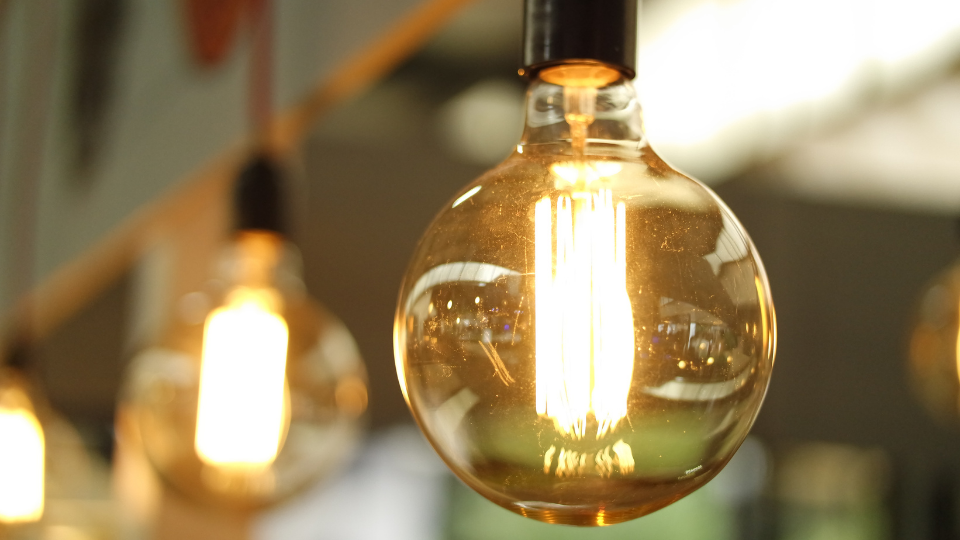Selling a home is about so much more than listing the number of bedrooms and bathrooms. In today’s dynamic real estate market, your listing has mere seconds to make a positive impact on potential buyers as they scroll through dozens—if not hundreds—of properties. Those few seconds can mean the difference between a buyer lingering on your listing or moving on to the next one.
What makes potential buyers stop in their tracks? Eye-catching photographs. An appealing visual is a powerful tool that can pull someone in, spark imagination, and help them envision a house as their own. Whether you’re selling a quaint starter home or a luxury estate, professional photography is an investment that pays off significantly. Proper lighting, composition, and expert editing can enhance your home’s best features and elevate your listing beyond the competition.
In this blog post, we’ll delve deep into why professional images are so crucial, the psychological impact of high-quality visuals, the principles of lighting, and how these elements come together to showcase your home in its best light. We’ll also offer tips on what homeowners can do to prepare for professional photos, helping you get the maximum benefit from your real estate photography session.
1. The Psychology of First Impressions
First impressions matter—a lot. When potential buyers look at real estate listings, they’re not just checking off boxes for location, number of rooms, or square footage. They’re responding on an emotional level, whether they realize it or not. The images in a listing set the stage for these emotional reactions. If the photos are dark, blurry, or unappealing, a buyer might assume the property is poorly maintained or out of touch with the current market. This negative impression can stick, even if the home is actually in great condition.
1.1 The Role of Emotional Connection
Buying a home is one of the biggest decisions—and biggest purchases—most people will make in their lifetimes. This is rarely just a logic-based process; it’s an emotional journey. Professional photography taps into that emotional undercurrent by highlighting a property’s warmth and unique charm. Warm, well-lit spaces trigger feelings of comfort and invitation. Cozy nooks or bright kitchens can project the allure of a “dream home,” enticing buyers to learn more and perhaps book a showing.
1.2 Visual Storytelling
Professional images don’t just “tell” buyers what a property looks like; they show how it feels to live there. Each photograph is part of a visual story, guiding the viewer from the welcoming foyer and vibrant living spaces to the tranquil bedrooms and spa-like bathrooms. When shot correctly, photos can spotlight the features a homeowner is most proud of, whether that’s a grand staircase, a gourmet kitchen, or a scenic backyard oasis.
By curating a collection of images that flow together seamlessly, the photographer directs the viewer’s emotional journey through the home. This style of visual storytelling helps buyers imagine themselves and their family in the space, building an emotional bond that makes them more likely to schedule a showing.
2. The Power of Professional Photography
Some homeowners wonder whether hiring a professional photographer is really worth it, especially when smartphones have such powerful cameras these days. However, there is a stark difference between a quick smartphone snapshot and a professionally composed and lit image.
2.1 Expertise in Composition
Professional photographers bring a keen eye for composition. This includes understanding how to position the camera for the most flattering angles, where to place objects in the frame, and how to guide the viewer’s eye toward the home’s best features. Wide-angle lenses, for instance, can help capture more of the room’s space, yet if misused, they can distort reality. Photographers who specialize in real estate know how to employ wide-angle shots without making rooms look unrealistic.
In addition to angle choices, photographers also skillfully compose shots around focal points. For example, in a living room, the focal point might be a stylish fireplace with an elegant mantel. By centering or offsetting the fireplace in a strategic way, the photographer encourages the viewer’s eye to settle on that beautiful detail first.
2.2 Equipment and Technical Know-How
While high-end smartphones are impressive, they still can’t outperform professional-grade cameras and lenses in many crucial areas—particularly in lower-light conditions or capturing the subtle details of a property. A professional real estate photographer will typically have:
- DSLR or Mirrorless Cameras with large sensors for better light capture and detail.
- A Range of Lenses, including wide-angle lenses for interior shots and prime lenses for capturing crisp details in close-ups.
- Tripods and Stabilization Gear to ensure every image is sharp and level.
- Lighting Equipment such as off-camera flash or multiple flash units to light dim corners and highlight architectural details.
Moreover, professionals have the technical knowledge to know when and how to deploy these tools. They understand how to balance interior lighting with natural light coming in from windows, as well as how to bracket shots (taking multiple exposures of the same scene) for high-dynamic-range (HDR) photography. This technique can yield stunning images where both the inside of the home and exterior views through the windows are perfectly exposed.
2.3 Post-Processing Mastery
Photography doesn’t end when the camera clicks. Editing is where a good shot can transform into a phenomenal one. Professional photographers utilize software like Adobe Lightroom or Photoshop to correct color balance, straighten lines, remove lens distortions, and fine-tune lighting. They can also touch up minor imperfections without over-processing the image.
Effective post-processing ensures that images look clean, inviting, and realistic. Potential buyers get an accurate yet optimized look at each room. Over-edited photos can backfire, though—if buyers arrive for a showing to find the home looks drastically different than in the pictures, they’re likely to feel disappointed. Experienced photographers and editors understand this balance and strive for authenticity.
3. How Lighting Impacts Photography
Lighting can make or break a photograph. It’s the subtle but powerful force that shapes mood, depth, and overall image quality. Poorly lit rooms appear smaller, duller, and less welcoming. On the flip side, strategic lighting can give a space life, highlighting attractive architectural details or décor elements.
3.1 Natural Light vs. Artificial Light
In real estate photography, leveraging natural light is often the first choice. Sunlight provides a soft, warm glow that flatters interior spaces. Large windows or skylights let in plenty of light, making a space appear airy and bright. However, relying solely on natural light has its challenges:
- Time of Day: Midday sun can create harsh shadows. Early morning or late afternoon (the “golden hours”) might offer more flattering light, but availability is limited.
- Weather Conditions: Overcast skies and rainy days can dull the natural brightness, leading to dark, gloomy shots.
This is where artificial lighting (flash units, reflectors, and LED panels) comes into play. Well-placed artificial lighting supplements or mimics natural light, ensuring consistency and balance. Expert photographers understand how to blend the two light sources, so images retain a natural look rather than appearing washed out or artificially bright.
3.2 The Emotional Resonance of Light
Lighting isn’t purely functional; it’s also deeply emotional. Soft, diffused light in a bedroom can evoke a sense of tranquility and comfort. A bright, well-lit kitchen exudes cleanliness and energy, while a warmly lit living room suggests coziness and relaxation. Different areas of a home serve different emotional needs, and appropriate lighting can emphasize those moods, helping potential buyers connect with each space on a deeper, more personal level.
3.3 Emphasizing Architectural Details
Architectural details—exposed beams, crown molding, archways, or built-in shelving—can become standout features when lit properly. Light can guide the viewer’s eye toward these points of interest. For instance, a gently lit alcove draws attention to its unique shape, while carefully placed lamps on a built-in shelf can highlight the craftsmanship of the woodwork.
4. Key Lighting Techniques for Showcasing a Home
A skilled photographer will employ a variety of techniques to “light up” your home in a way that’s both aesthetically pleasing and faithful to reality. Here are some common methods:
4.1 HDR (High Dynamic Range)
HDR photography involves taking multiple shots of the same scene at different exposures—some underexposed to capture highlight detail, others overexposed to capture detail in the shadows—and then blending them into a single image. The result is a photo that retains detail in both bright and dark areas, offering a more balanced representation. HDR is particularly useful for rooms with large windows or spaces with strong contrast between light and dark areas.
4.2 Off-Camera Flash
Instead of relying on the camera’s built-in flash, photographers often use off-camera flash units placed strategically around a room. This technique reduces harsh shadows that can occur when the light source is close to the camera lens. By positioning multiple flash units, a photographer can create a more flattering, even illumination that makes each room look naturally bright.
4.3 Window Pulls
Window pulls are a specialized technique used to ensure that windows—especially if they reveal a fantastic view—are exposed correctly. Photographers may take an exposure specifically for the outside view while another exposure captures the interior lighting. They then merge the two exposures in post-processing so you can see both the well-lit interior and the beautiful exterior scenery in a single photo.
4.4 Twilight Photography
Twilight or dusk shoots can be incredibly striking. This type of photography typically involves capturing the exterior of a home at the magical moment when the sky transitions from day to night. The deep blue or purple sky, combined with the home’s interior and exterior lights, creates a warm, inviting glow. Twilight photography can be especially appealing for high-end listings or properties with impressive outdoor features like pools, gardens, or patios.
5. Composition and Angles: Bringing Out the Best
Light is critical, but composition is the framework that supports it. Even the most beautifully lit scene can look unimpressive if the angle is off or if too much clutter is shown in the frame.
5.1 Leading Lines and Perspective
In photography, “leading lines” are compositional elements that guide a viewer’s eyes through the image. Hallways, countertops, staircases, or even lines in the flooring can direct attention to a room’s focal point. When used effectively, they create a sense of depth and draw the viewer in.
Perspective also plays a key role. A low camera angle might accentuate vaulted ceilings and give an impression of grandeur, whereas a slightly elevated angle can make a small room appear more open. A seasoned real estate photographer experiments with these angles to discover which viewpoint best showcases each space.
5.2 Balancing the Frame
Clutter or poor room layout can visually crowd an image, making the space appear smaller. An experienced photographer will take time to clear distractions and frame each shot carefully. Symmetry and balance often appeal to a viewer’s subconscious. Placing a large piece of furniture in the frame’s middle might be balanced by a window on one side and a piece of artwork on the other, creating a harmonious look that feels pleasing to the eye.
5.3 Highlighting Key Features
Sometimes, the best composition is one that zeroes in on a noteworthy feature, like a textured accent wall or a luxurious bathroom vanity. In such cases, the photographer might adopt a slightly closer crop. This helps potential buyers appreciate special design details that can differentiate your home from the competition.
6. Staging for Photos: Preparing Your Home
Professional photography is most effective when a house is photo-ready. Even top-tier photographers can’t fully compensate for a cluttered or poorly staged home. Staging plays a critical role, whether it’s a professional staging service or a DIY effort. Here’s how to ensure your home is camera-ready:
6.1 Declutter and Depersonalize
Excess items can make rooms look smaller, and personal items—like family photos or specific collectibles—can distract potential buyers from seeing the home as “theirs.” Minimalism is the key:
- Remove unnecessary décor to open up floor space.
- Organize shelves and cabinets to look neat and spacious.
- Hide personal items like toothbrushes in the bathroom or family portraits in the living room.
While you don’t want a home to look sterile, you do want it to appear fresh, inviting, and universally appealing.
6.2 Clean Thoroughly
A camera will pick up details that the naked eye might skim over. Fingerprints on stainless-steel appliances, water spots on faucets, or dusty baseboards can stand out in high-resolution photographs. Give the home a deep clean, paying special attention to reflective surfaces like windows, mirrors, and metal fixtures, because these catch and bounce light.
6.3 Add Inviting Touches
Small touches can transform a space from “plain” to “polished”:
- Fresh Flowers or Potted Plants add a pop of color and life.
- Matching Towels and Linens create a cohesive, spa-like feel in bathrooms and bedrooms.
- Subtle Aromas like freshly baked cookies or a softly scented candle can make the home feel cozy, though for photos, it’s more about the visual rather than scent.
6.4 Optimize Lighting Conditions
- Open Blinds and Curtains to maximize natural light.
- Replace Burnt-Out Light Bulbs so all fixtures work properly.
- Use Consistent Lighting Temperatures (e.g., all warm-toned or all daylight-toned bulbs) to avoid odd color casts in photos.
7. Working With a Professional: What to Expect
Knowing what to expect when hiring a professional real estate photographer can help you better prepare and ensure a smooth process.
7.1 Pre-Shoot Consultation
A good photographer will usually start with a consultation—either over the phone or in person—to discuss your goals, the property’s best features, and any special concerns you might have. This is the time to mention unique architectural elements, recently renovated areas, or stellar views that you want to emphasize.
7.2 Shooting Day
On the day of the shoot, make sure the home is ready to go. Open the blinds, set out any final staging details, and do a quick last-minute tidy-up. Plan to be out of the photographer’s way while they work. They may reposition certain items or furniture to get the best shots; this is normal and can improve the final images significantly.
7.3 Post-Processing Timeline
Professional photographers often need a few days (or more, depending on their workload and the complexity of the shoot) to deliver the final edited images. Real estate photographers typically have a faster turnaround time than wedding or portrait photographers, given the time-sensitive nature of real estate listings. Ask about the timeline upfront so you can plan your listing launch accordingly.
7.4 Review and Feedback
Once you receive the edited photos, review them promptly. If there’s a specific concern—like a window view that didn’t come out as hoped or a noticeable reflection that might need retouching—communicate this to the photographer. Most professionals include one round of minor edits in their package.
8. The Return on Investment of Professional Photography
Paying for professional photography may feel like an added expense, but it’s more accurate to see it as an investment in your home sale. Numerous studies show that listings with professional photography:
- Sell Faster: High-quality images attract more interest, leading to showings and offers at a quicker rate.
- Sell for More: Buyers often perceive professionally photographed homes as more valuable, and these listings can fetch higher selling prices compared to those with amateur photos.
- Stand Out in Competitive Markets: When many homes in your area offer similar features, gorgeous images can tip the scales in your favor.
In a competitive real estate environment, the relatively modest cost of professional photos can pay off handsomely in both time savings and sale price.
9. Beyond Photography: Enhancing Your Listing
Although photography is crucial, it’s not the only element that can make your listing shine. Consider these complementary marketing tools:
9.1 Video Tours or Virtual Walkthroughs
Video tours, drone footage, and 3D virtual walkthroughs provide an immersive experience, letting buyers explore the property’s flow. However, professional images are usually still the first point of contact. If the photos are poor, buyers may never bother to watch the video.
9.2 Floor Plans
A clear floor plan helps buyers visualize how each space connects and whether the layout fits their lifestyle. Combine floor plans with compelling photography, and you’ll give potential buyers a well-rounded understanding of the property before they ever set foot inside.
9.3 Property Descriptions
Photos might capture attention, but a strong description closes the deal, guiding buyers through the highlights and emphasizing the home’s unique selling points. Mention how the sun lights up the living room during the mornings or highlight recent renovations.
10. How to Keep Your Home “Photo-Ready” for Showings
Once you have those stunning photographs, you’ll likely see an uptick in showing requests. A key challenge for sellers is keeping the home looking as good in person as it does in the photos. Here are a few strategies to maintain that elevated presentation:
- Regular Quick Tidying: Set aside 10-15 minutes each day to straighten up.
- Control Clutter: Use baskets or decorative boxes to store day-to-day items quickly out of sight before a showing.
- Spot Clean: Keep handy tools like a microfiber cloth for smudges on appliances, and a quick spray mop for the floors.
- Plan for Pets: Remove pet beds or litter boxes during showings if possible, and keep pets in a safe, contained area (or take them out for a walk).
The more consistent your home is with the promise of those dazzling photos, the more positive a buyer’s showing experience will be.
11. Common Pitfalls and How to Avoid Them
Even with professional photography and careful preparation, certain pitfalls can diminish your listing’s effectiveness. Knowing what they are can help you avoid them:
11.1 Over-Editing or Misrepresentation
While it’s tempting to tweak photos to perfection, overly manipulated images can lead to buyer disappointment during a showing. Keep any retouching realistic—removing a stray wire or brightening a dark corner is acceptable, but don’t Photoshop out permanent features like visible pipes or a large utility box.
11.2 Inconsistent Lighting
Mixing different types of light (daylight bulbs in one room, warm incandescent bulbs in another) can create jarring color shifts in your images. Consistency is key, especially for continuity in HDR or blended exposure shots.
11.3 Lack of Cohesive Story
Your listing photos should tell a logical story from the exterior approach to the main entry, living areas, bedrooms, bathrooms, and outdoor spaces. Make sure the gallery order makes sense. Avoid random ordering, like jumping from the kitchen to a bedroom, then back to the exterior. Cohesion helps buyers visualize the flow.
11.4 Not Prioritizing the Best Features
If your home has a gorgeous open-plan kitchen or a serene backyard oasis, ensure those features get prime real estate in the photo lineup. Sometimes, sellers focus on quantity over quality, flooding the listing with redundant angles or mediocre shots. Select only the best images and spotlight what truly makes your home shine.
12. The Intangible Benefits: Confidence and Pride
It’s worth noting that professional photography benefits not just prospective buyers but also you, the seller. Seeing your home presented beautifully can instill a sense of pride and confidence in your listing. This positive mindset can influence how you negotiate and how you handle showings, as you’re assured that you’re putting your best foot forward.
Moreover, when you’re confident in how your property is being perceived, it often translates into smoother transactions. You’re less likely to second-guess your marketing approach and more likely to convey an air of professionalism to buyer’s agents and prospective buyers.
13. Conclusion: Light It Up for a Brighter Sale
In today’s competitive real estate market, the visual presentation of your home can be a game-changer. High-quality, well-lit, and thoughtfully composed photographs serve as the digital “open door,” inviting buyers in to see the potential, comfort, and beauty your property has to offer. By investing in professional photography, you’re not just paying for photos; you’re paying for a powerful marketing asset that can help your home stand out, attract more viewings, and potentially sell faster—and at a higher price.
Remember, lighting is one of the most crucial components in real estate photography. The right balance of natural and artificial light, combined with expert composition, transforms ordinary spaces into inviting sanctuaries. Whether it’s a grand foyer or a cozy reading nook, professional photography helps you “light it up” in a way that resonates with buyers on both emotional and practical levels.
Key Takeaways:
- Professional real estate photographers excel at composition, have top-notch equipment, and possess the editing skills to make each room shine.
- Proper lighting techniques—like HDR and off-camera flash—help convey the true potential of every space, ensuring buyers see bright, welcoming rooms rather than dark corners.
- Staging your home by decluttering, depersonalizing, and adding inviting touches maximizes the impact of professional images.
- A high-quality photo set offers an incredible return on investment by attracting more buyer interest, faster sales, and potentially higher offers.
- Keeping your home “photo-ready” after the shoot by maintaining cleanliness and organization ensures buyers see the same beauty in person that they fell in love with online.
By understanding the significance of lighting and professional images, and by preparing your home accordingly, you’ll ensure that each photograph showcases your property’s best features. In a market where every second counts, capturing the attention of potential buyers in the best possible light can make all the difference. So, light it up—and watch as your listing shines above the rest.




